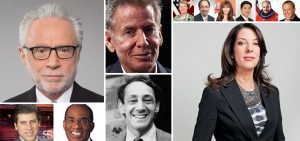 A city has many incentives to host big sporting events: visibility, entertainment, and, of course, commerce. With New York and New Jersey co-hosting the Super Bowl on Sunday, there will be thousands of visitors in the region to celebrate, cheer, and explore everything that the New York City metropolitan and surrounding areas have to offer. But what is the real impact on retail sales—a staple revenue stream of tourism?
A city has many incentives to host big sporting events: visibility, entertainment, and, of course, commerce. With New York and New Jersey co-hosting the Super Bowl on Sunday, there will be thousands of visitors in the region to celebrate, cheer, and explore everything that the New York City metropolitan and surrounding areas have to offer. But what is the real impact on retail sales—a staple revenue stream of tourism?
Expert Response
 Name: Vincent Quan
Name: Vincent Quan
Capacity: Fashion Merchandising Expert
Campus: Fashion Institute of Technology
Expertise: Specializes in retail planning, merchandise planning, process re-engineering, strategic planning, and branding/marketing
Similar Fashion Institute of Technology Fashion Merchandising experts
Q: What is the impact of the Super Bowl on retail sales in New York City?
A: It’s difficult to quantify, but there are many different stakeholders that benefit from the additional exposure.
Mr. Quan explains:
Historically, the Super Bowl has been held outdoors in more temperate climates or indoors in colder climates. For the first time, it will be held outdoors in a cold weather climate at East Rutherford, New Jersey’s MetLife Stadium. New York City and various retailers have been preparing in earnest to capitalize on the event which is expected to draw nearly half a million visitors from far and wide. Super Bowl Boulevard has been set up on Broadway from 34th to 47th Streets in Manhattan to capture the buzz, with Times Square as a focal point.
H&M, the fast fashion retailer, will launch their exclusive Beckham Bodywear Collection at the Times Square store with an exclusive appearance by David Beckham himself slated for this weekend. Macy*s has opened a 36,000 square foot NFL Shop at their Herald Square flagship store to draw customers. Numerous pop-up shops, from fashion to food, will make their appearance along the venue, as well as in and around the city.
There are several factors driving the Super Bowl’s financial impact on New York’s retail economy. Weather is a major factor. Retail sales are driven by customer traffic and then conversion of these same customers to ultimate consumers, or purchasers of goods and services. If the weather is extremely cold, consumers will more than likely remain indoors rather than face the cold during the week’s events.
Both Super Bowl contenders, the Denver Broncos and Seattle Seahawks will surely benefit from additional sport-based apparel and accessories sales in and around the city, and the country for that matter. After the Super Bowl champion has been crowned, sales of sports-based jerseys, caps and other related paraphernalia bearing the champion’s logo will surely jump. As an added factor, the NFL has purposely highlighted all of the NFL’s teams in addition to Denver and Seattle to spur overall sales of NFL-based products.
Finally, let’s not forget about those $4 million (per 30 seconds) television ads which are the hallmark of the Super Bowl event. Will the numerous brands recoup their investment via additional retail sales? It’s difficult to quantify. However, suffice it to say that impressions will be left, both positive and negative. For the memorable ads, it will be all about the “BUZZ” for the brand!
So, as it turns out, the Super Bowl being played in New Jersey/New York is a huge boost to the metropolitan economy!


